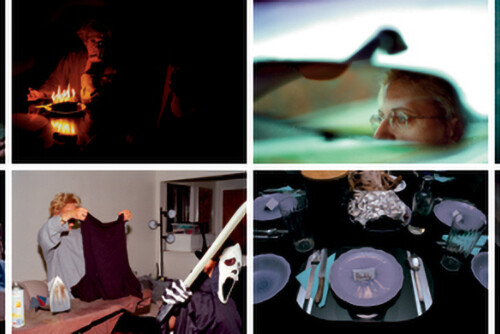Reflecting back on my book’s reception in relation to the recent art works of Isaac Julien and Connie Samaras has revealed encouraging new perspectives from artists who are restaging the politics of race, gender, sexuality and science in both polar regions from feminist and queer perspectives. If Julien brings us back to the earlier days of polar explorers and the epic in his fantasized re-enactment of the Peary and Henson trek, where he playfully and provocatively transforms the Arctic into a fashion runway event, Samaras pulls us away, bringing us into another fantasy space where we can begin to imagine how climate change and neo-liberalism have transformed these spaces in ways we otherwise would not have imagined. By refusing the aesthetics of the sublime from the heroic age, Samaras highlights the unreality, as well as the drab ordinariness, of this landscape and built environment. By virtue of her photographs that situate banal architecture in a sublime landscape, she draws our attention to the surreal contrast between the everyday and the heroic. This is in contrast to Julien, who camps up the extraordinary spectacle of the North Pole and creates in his film a black diasporic aesthetic in which he is able to bring back the beauty of the Arctic and the heroism of Matthew Henson. In the process, he queers this aesthetic by juxtaposing the culturally constructed beauty of a fashion model with the natural beauty of the landscape. Samaras instead downplays the spectacle by reducing it to the most ordinary surfaces and functions with her minimalism. By challenging documentary conventions in critical ways, such as her unsettling blurring of the boundaries between the artificial and the natural, she draws on the genres of science fiction and horror to give artistic expression to her experience of Antarctica, both in its routine everyday aspects and in its surreal extremes.
Both Samaras and Julien are telling stories about an absent subjectivity, but while Julien uses this as an occasion to make a political statement on beauty and aesthetics, Samaras’s interest is more in creating a new aesthetics about daily life and survival in these unearthly neo-liberal institutional settings. Thus, her aesthetics, compared to Julien’s exuberance and lavishness, is extremely spare and pared down, though she does employ an emotionality in her work that differentiates it from more reserved dead-pan photographic practices. What their works have in common is that neither can be simply folded back into a conventional discussion of the sublime, blankness or politics. Both are engaging these regions in new ways that implicitly question the heroic and what it means to resurrect it at this historical moment, when global warming and the return of colonialism have brought renewed attention to both these regions. Julien’s and Samaras’ viewpoints suggest some important new directions in contemporary art, and in the process, their work makes us think differently about how postcolonial, black queer, and feminist perspectives have contributed to changing the discussion of art history and of Arctic and Antarctic discourses. One can only imagine what could happen if they, or other artists in their wake, bring this transformed aesthetic sensibility to other contemporary sites where history and current politics intersect and collide.
Acknowledgements
I would like to thank Norman Bryson, Elena Glasberg, Janet Jakobsen and Roddey Reid for reading this article and providing intellectual and editorial guidance. Thanks to Elissa Weintraub for providing useful suggestions and editorial support, and to Laura Kay for inviting me to participate in this special issue.


